February 29th 2024
Detroit’s Indian Village

Traveler: Dawn Fritz
Destination: Indian Village – Detroit, Michigan
With limited time on a recent trip to Detroit, our Director of Marketing, Dawn Fritz, made a beeline for the historic neighborhood of Indian Village, where she discovered a significant collection of classic, early twentieth century homes.
Earlier this month, I made a quick weekend trip to Detroit. It was essentially my first visit to the Motor City. To be fair, I’d been there in 2013 to attend the Auto Show, but that was an even shorter trip than this, flying up and back the same day. I was there this time to visit a family member who had recently moved to Detroit, and I’d already been ‘exploring’ the city’s historic neighborhoods and buildings via the internet. But, with just a few hours of daylight, I knew I had to narrow down my ‘on-the-ground’ sightseeing options to one residential neighborhood. We hit the jackpot in terms of weather. It was brisk but sunny, so we set out Sunday morning for Indian Village, a historic neighborhood dating to 1894.
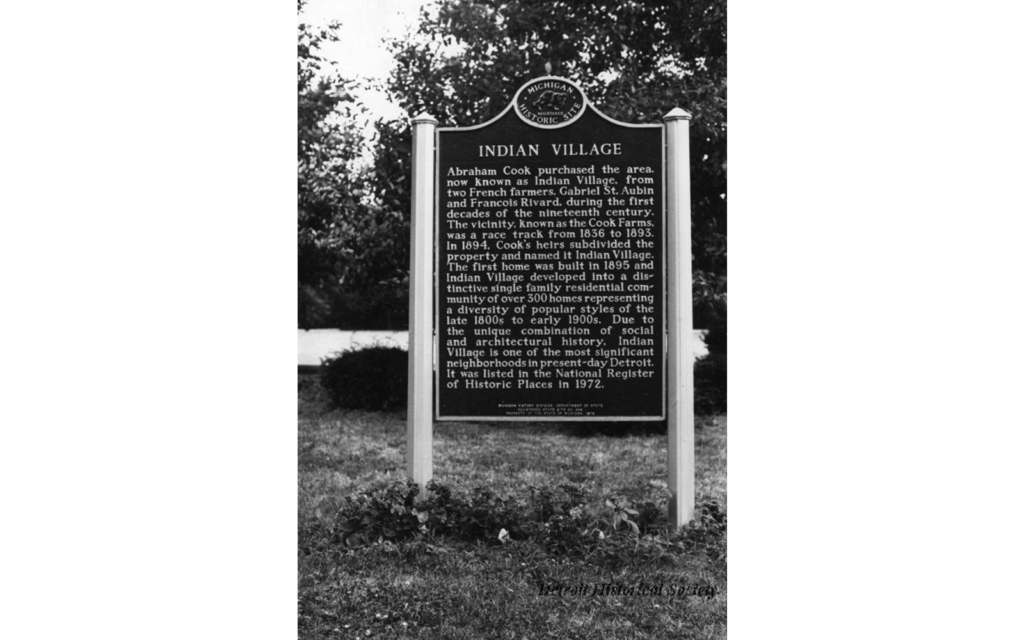
photo courtesy of Detroit Historical Society
According to the Indian Village Historic Preservation Association, Indian Village was conceived as a “first-class residential district on a generous scale.” It attracted Detroit’s most prosperous families, including automotive entrepreneurs such as Edsel Ford and Henry Leland, the founder of Cadillac and Lincoln. As it was being developed in the early 1900s, prominent architects contributed to the streetscape of Indian Village, including Albert Kahn, often referred to as the “Master Architect of Detroit,” and Louis Kamper, who started his career as an apprentice with McKim, Mead & White.
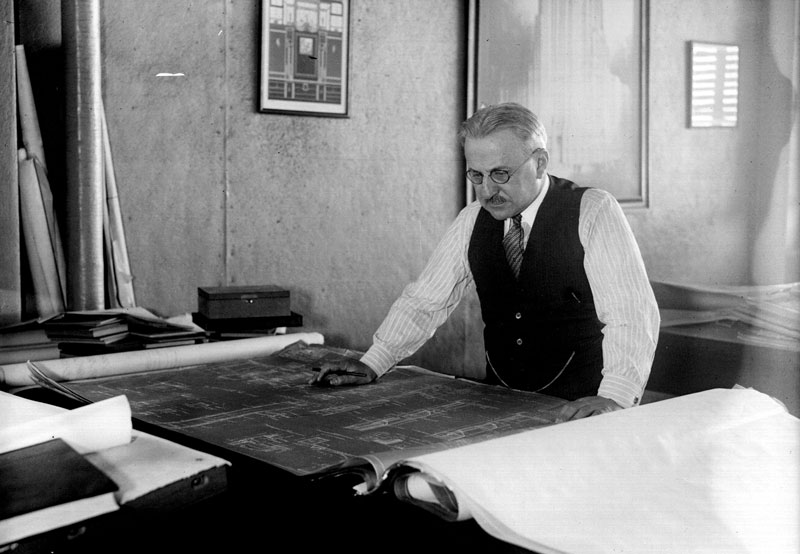
Albert Kahn ~ photo courtesy of Albert Kahn Associates
The historic character of Indian Village’s 350 homes has been protected since 1971 when it was officially added to the National Register of Historic Places. We drove up and down Indian Village’s streets and I was struck by the richness and variety of the architecture, and how the scale of the homes and their relation to the street and each other made it feel like a vibrant neighborhood even in a bleak winter landscape. I regret I only had time to walk one block and photograph a handful of homes, but I am looking forward to returning in June for the neighborhood’s annual home and garden tour.
Indian Village is an architecture enthusiast’s dream; there is beauty everywhere you look, with homes of varying scales and styles and wonderful, classic details. Here are a few that caught my eye on my quick 10-minute walk on Iroquois Street, all just snapped with my iPhone:
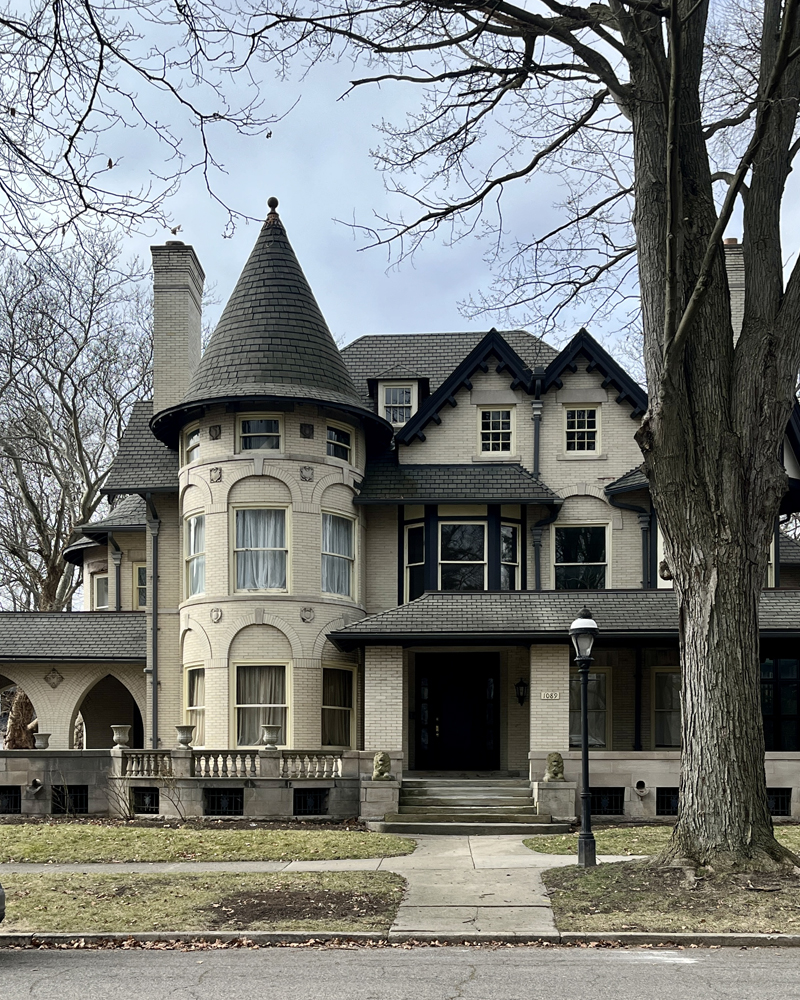
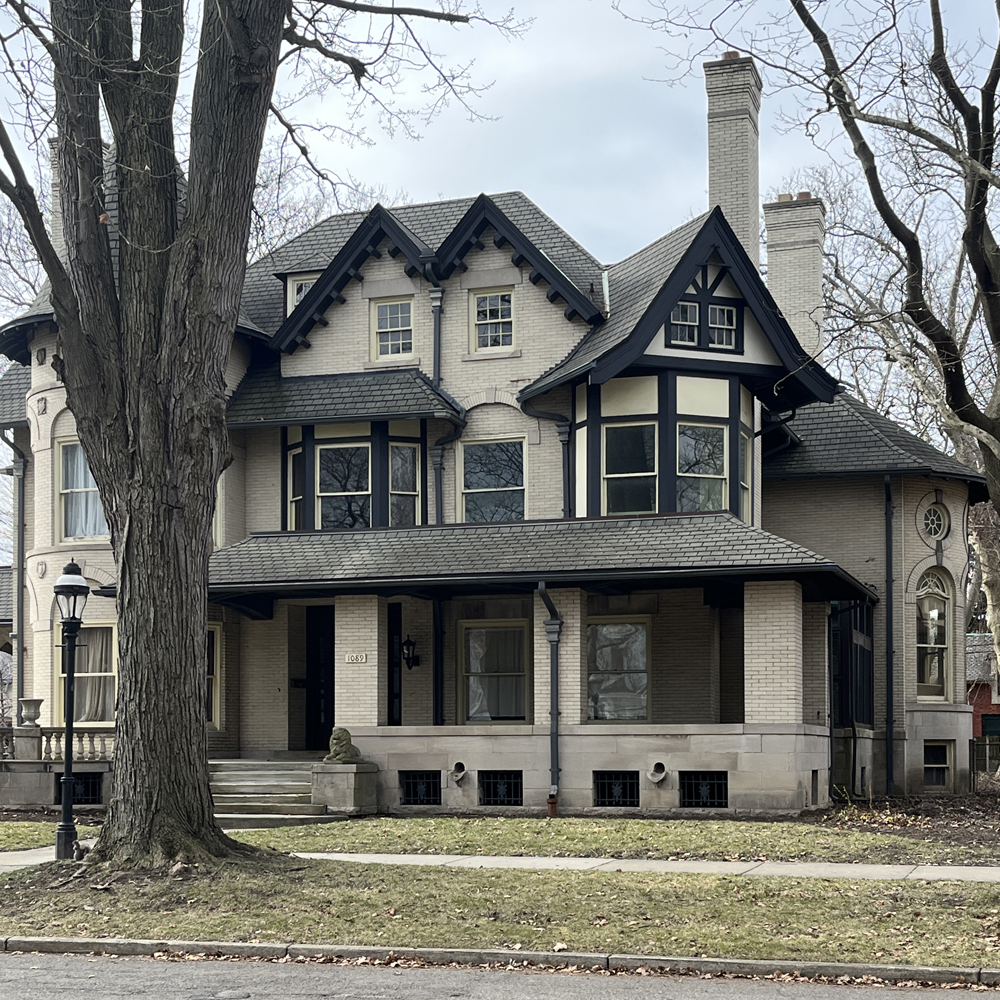
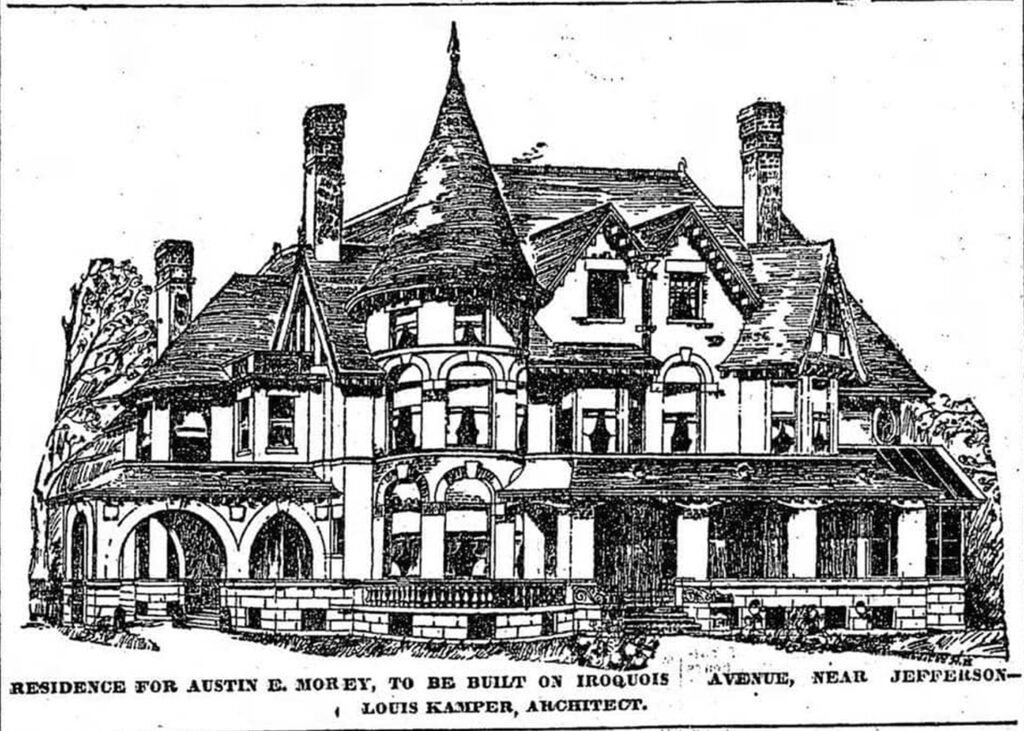
~ The Austin E. Morey House ~
The Austin E. Morey House at 1089 Iroquois Street was designed by Louis Kamper. Built around 1906, it has been described by some as Romanesque Revival. I love the turret, the porte cochere, the covered porch, and that ‘storybook’ window bay set on a 45-degree angle. The home was on the market a few months ago, so you can peek inside via this article in the Detroit Free Press: “Louis Kamper designed house in Detroit’s Indian Village Historic District for sale at $1.2 M.” TRUST ME, you’ll want to take this detour, even if just to see the staircase. It’s a masterpiece of art and craftsmanship.
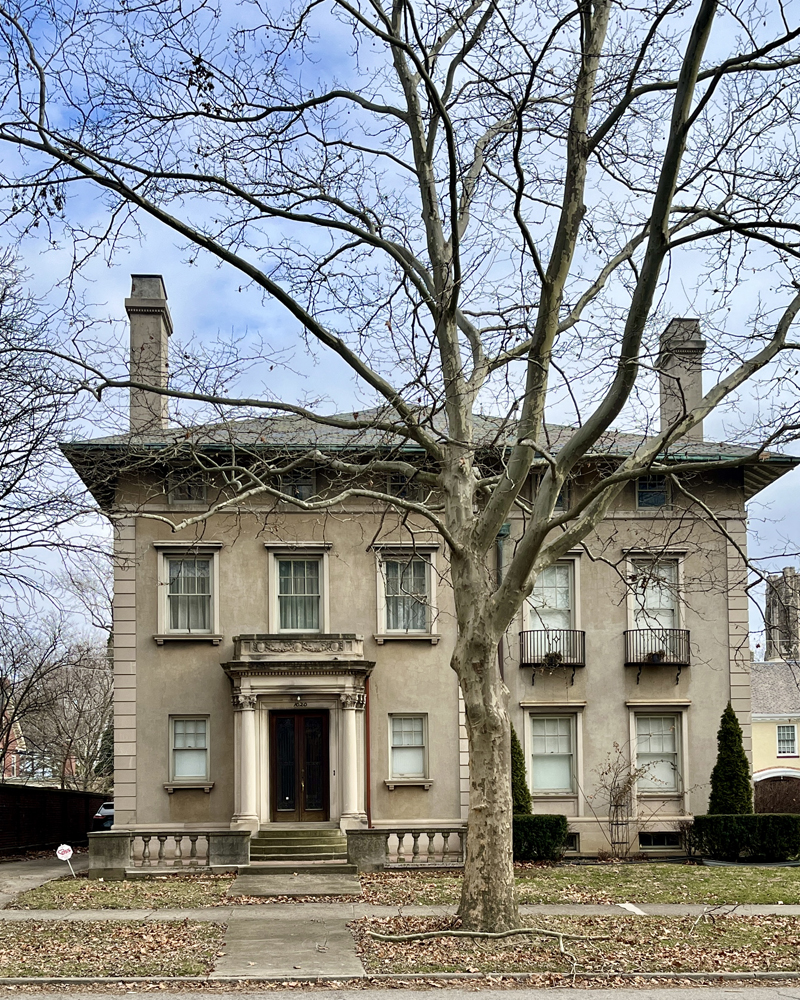
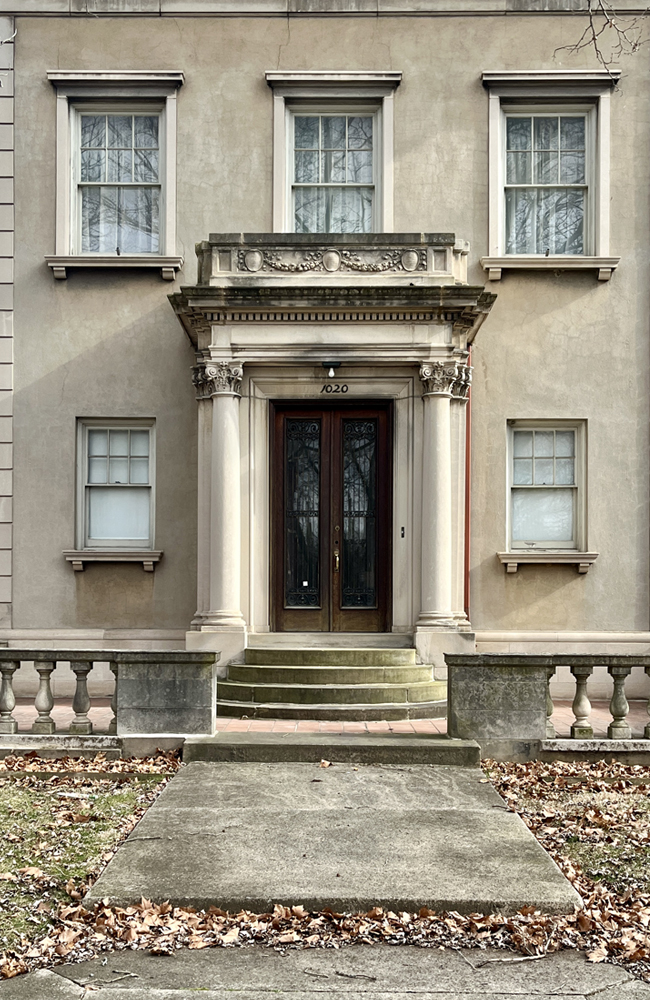
~ The Mary G. Edgar House ~
The Mary G. Edgar House has been described as Italian Renaissance or Renaissance Revival style. Located at 1020 Iroquois Street, it was designed by Alpheus Chittenden of the firm Chittenden and Kotting in 1913. The AIA Guide to Detroit further describes its style as “continental,” stating it is a Detroit interpretation of a Fifth Avenue townhouse in New York City.
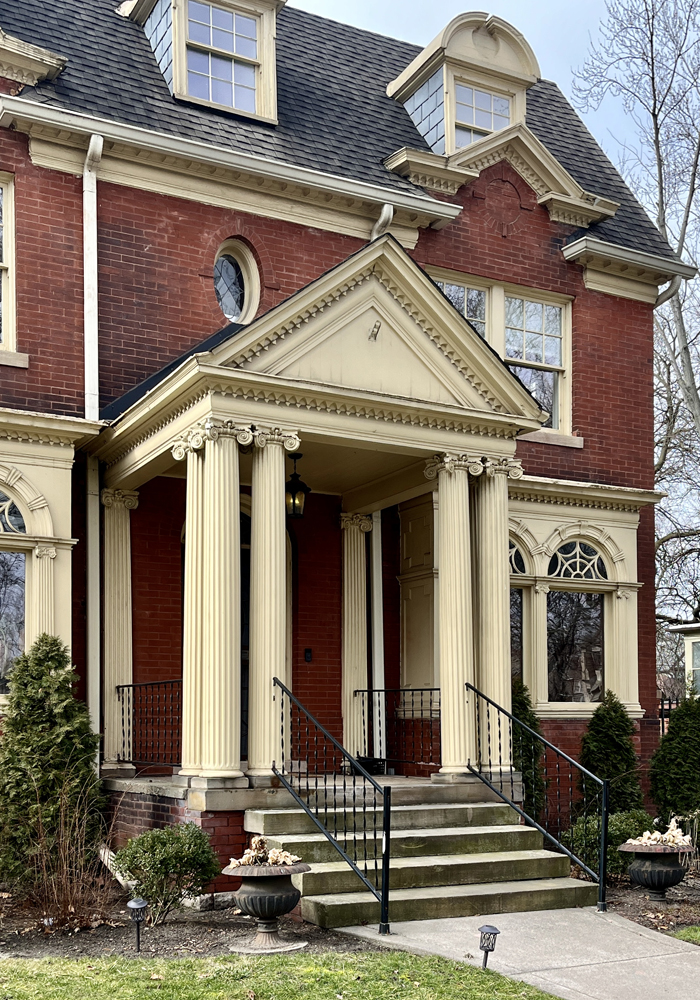
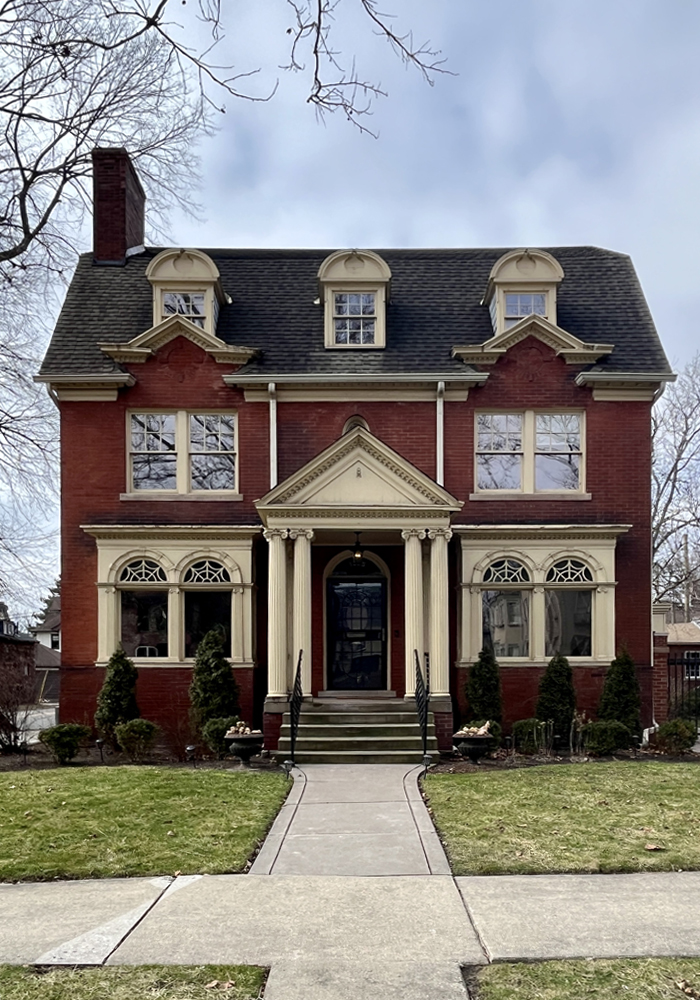
~ The Henry L. Walker House ~
The Henry L. Walker House at 1005 Iroquois was one of the early homes in Indian Village. It was designed by the firm of Rogers & MacFarlane and dates to either 1899 or 1904. It has been described as Colonial Revival or Georgian style. I was particularly taken by the detailing of the first floor windows and their protruding bays.
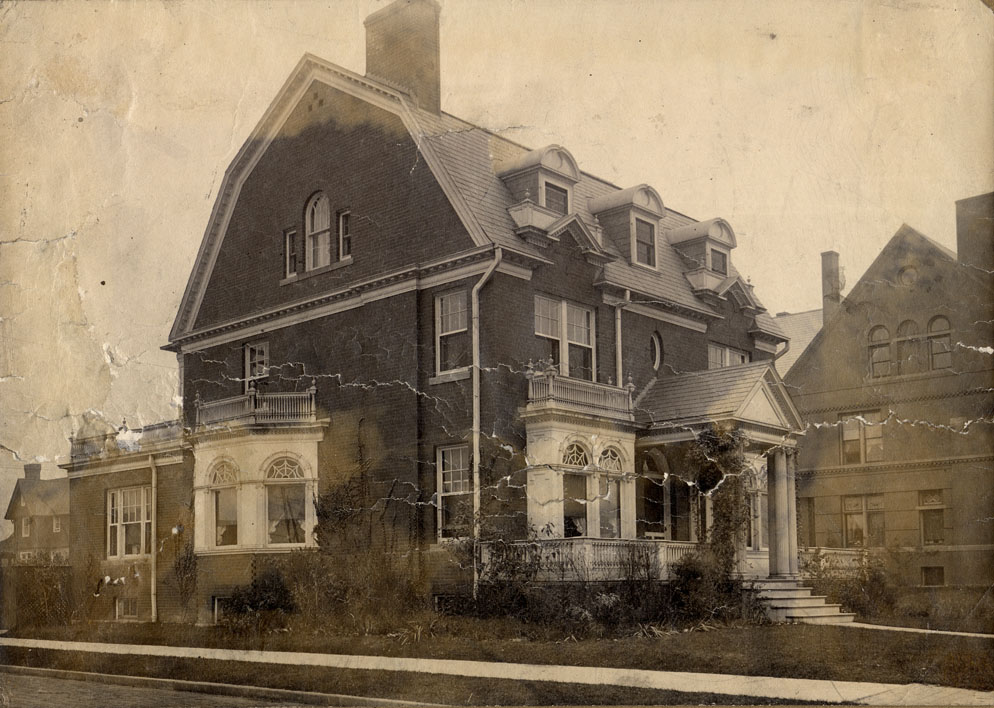
There is also a complementary window bay addressing the side street which can be seen in this historical image (courtesy of Burton Historical Collection, Detroit Public Library).
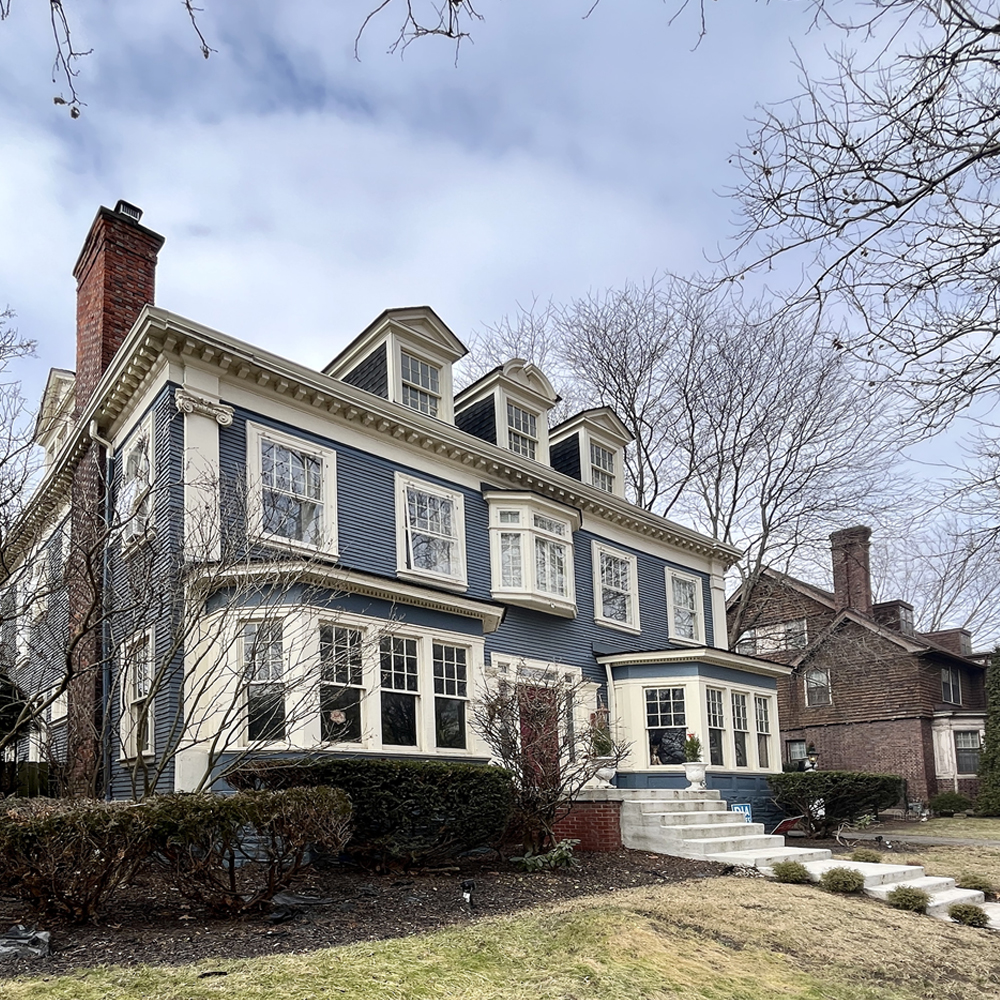
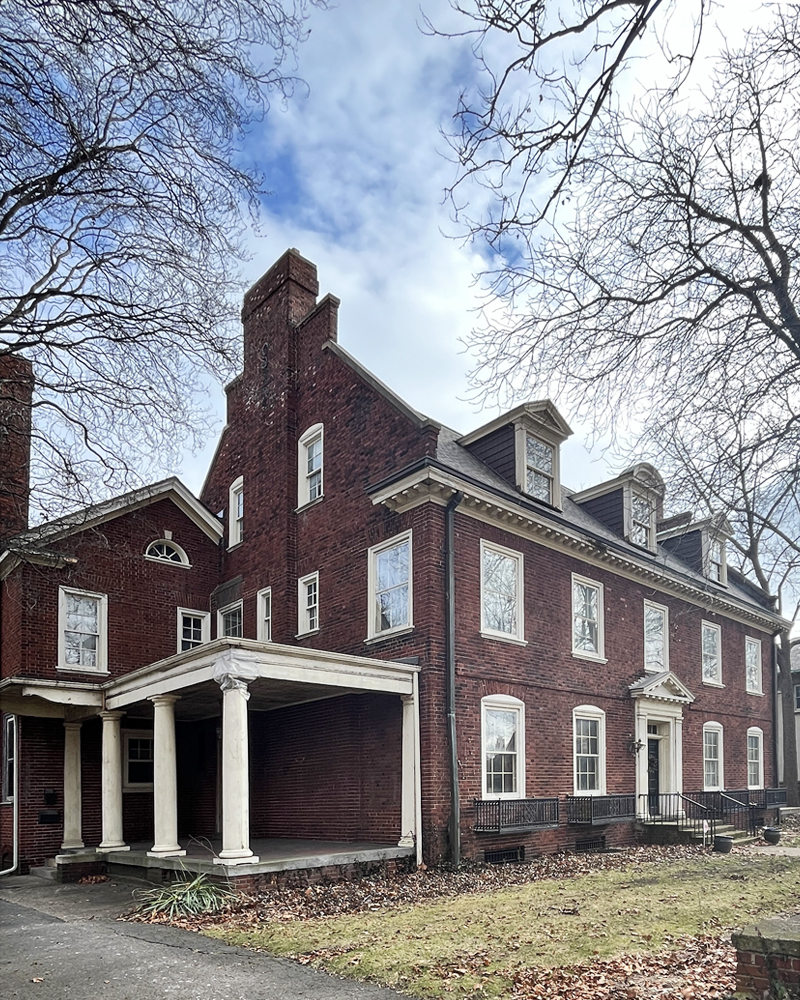
~ The Frank C. McMath House & The Gustavus D. Pope House, both designed by Albert Kahn ~
Facing each other across Iroquois Street are two Albert Kahn-designed homes. The Frank C. McMath House (left) was built between 1902 and 1904. In this online tour of the Colonial Revival home, it appears that much of the original interior character is intact. Directly across the street is the Gustavus D. Pope House (right) built around 1906.
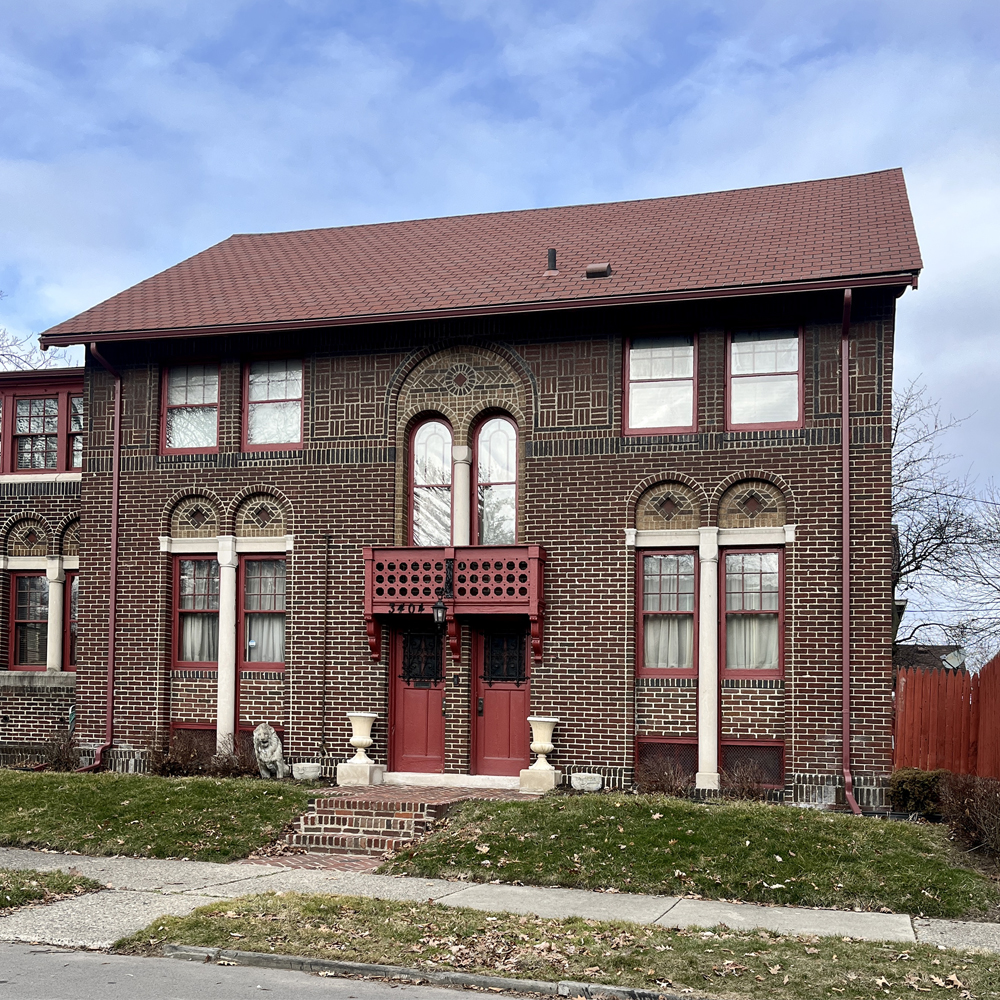
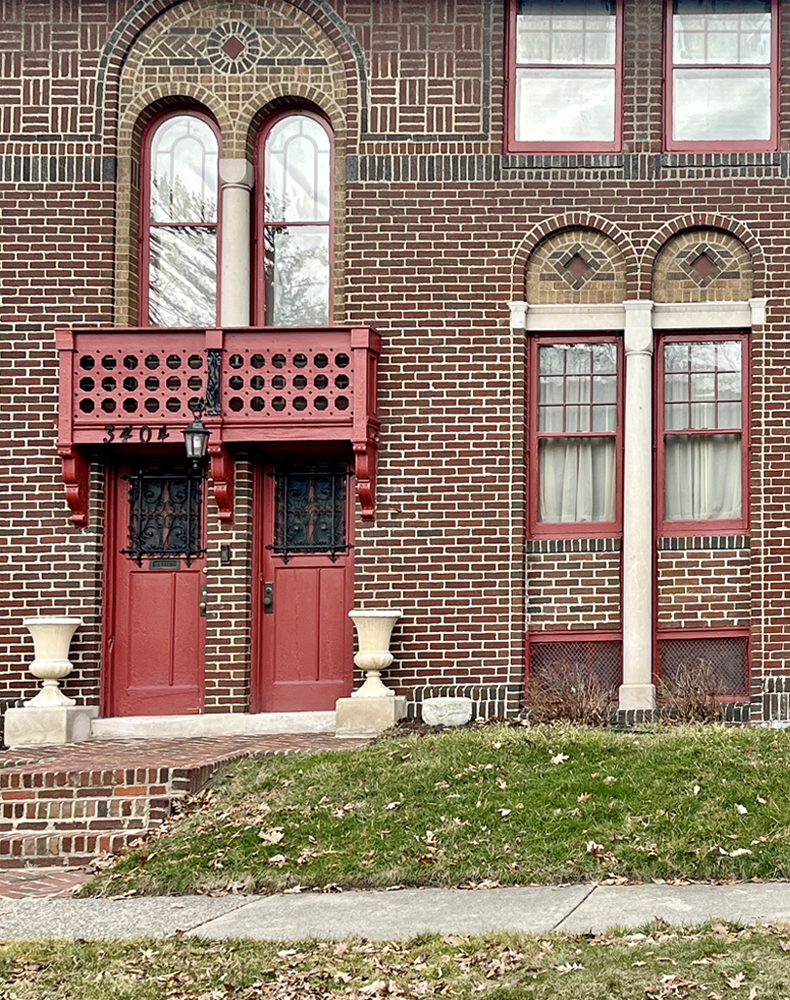
~ The Guido G. Behn House ~
Finally, as I hopped back in the car, the detailing on this home at 3404 Iroquois caught my eye and I snapped a picture from the passenger seat. I could not find much information about this house, only that it is the Guido G. Behn House by the firm of Dunlap & Willeke, circa 1915. I’m intrigued by the brickwork, the paired doors, and the detailing above them.
Thanks for joining me on this brief look at a charming Detroit neighborhood!

P.S. – I’m amazed by the wealth of architectural photos of Indian Village, as well as other historic Detroit and Michigan homes on Instagram. In addition to the “official” Indian Village page, here are some of the other incredible photography profiles I came across on Instagram, which will provide any architect or architecture enthusiast with endless inspiration or precedent for a future project: @chrisbdom, @breathing_timemachine, @architecturaltourist, @perkinshouse.
Another great resource is HistoricDetroit.org, a non-profit website dedicated to sharing stories and photos about the city’s historic places and landmarks. The collection includes a comprehensive overview of architects who have contributed to Detroit’s architectural landscape and a very comprehensive photo survey documenting 200+ homes in Indian Village.